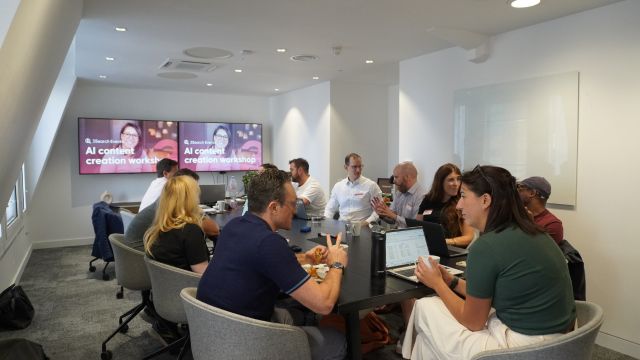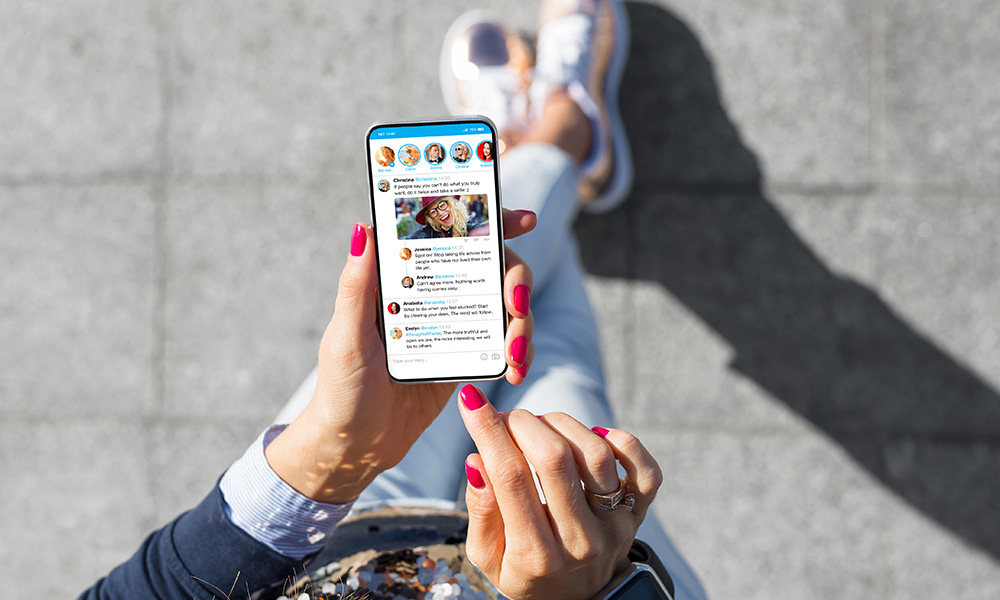
Upload Your CV
Send us your CV and a member of the team will be in touch to discuss open opportunities with you.
TikTok definitely had a rough start, but thanks to Coronavirus, it has finally found its fee...

TikTok definitely had a rough start, but thanks to Coronavirus, it has finally found its feet and become arguably the biggest success story of 2020.
In this blog, we take a look at
To find out more about how we think marketing will look in a post-pandemic world, check out our earlier blog post: ‘The Future Of Marketing In 2020 – How Your Team Will Look In A Post-Covid World’.
The app started its life as Musical.ly in 2014. The platform had a niche audience, mostly tweens, which ultimately caused its downfall in 2018. Influencers on the app, such as Jacob Sartorius, were aged between 13-15 at the time, giving you a good idea of their demographic.
If you were over the age of 20, it’s unlikely that you’d heard of the app, unless you’d featured in one of your kids’ videos.
They merged with TikTok in 2018 and even then it was a slow start, despite the creator, Alex Zhu, having high hopes for the merger.
I distinctly remember the advertising campaign that took over London Underground stations in late 2018. TikTok videos played on the screens and their banners were plastered on the escalators, lifts and ticket gates. The photos are still online.
They tried advertising to an adult audience to widen their demographic.
According to the BBC, in July of 2019, the app had 1 billion downloads with 500 million active users. This figure has now doubled to 2 billion downloads and 800 million users.
This is thanks to the boredom of lockdown.
Dance videos continue to be TikTok’s most popular genre. Spending hours perfecting the latest choreography acted as a good alternative to the gym whilst everyone was locked inside their houses.
Meanwhile, the opportunity to include your own sounds, rather than just other people’s music, allowed the creation of short comedic videos. TikTok had finally become a good alternative to the forever missed Vine. Something that has been wanted since its demise in 2016.
The entertainment value also comes from TikTok’s unique and unprecedented algorithm that allows people to see the content they want more easily than other apps.
Each user has a “For You Feed” which is how they consume and connect with creators. TikToksays that each feed is “unique and tailored to that specific individual” thanks to their algorithm.
The algorithm looks at:
1.User Interactions – videos liked/shared, accounts followed, comments posted, content created
2.Video Information – captions, sounds, hashtags
3.Device and Account Settings – language, country, device type
Altogether, these factors are used to recommend and weight each video’s value to users.
To read more about the algorithm and how it works, you can check out TikTok’s article.
This powerful and unique algorithm has helped TikTok stand out from the crowd in the world of social media and they are committed to continuing the improvement of their algorithm to ensure consistent accuracy.
Now, TikTok has launched TikTok For Business, calling for businesses to stop making ads and start making TikToks.
It seems like the app has been picked up by businesses more quickly than other platforms. Everyone has spent their furloughed months using TikTok as consumers and now that they’re back into the world of work, it’s being implemented more quickly into marketing strategies.
Lockdown hugely benefitted TikTok in this aspect, as employees have had the chance to use the app intimately. They know what works and what doesn’t so businesses know how to optimise their presence.
Their pitch for businesses recognises that their audience is still primarily Gen Z and Millennials, but this no longer holds them back.
TikTok has made the ability to share across platforms easier than any other app. Clicking the share button brings up fourteen different options alone. Whilst other apps want you to stay on their platform, TikTok shows the power of harnessing other social media networks.
Dunkin’ Donuts in America have got their TikTok marketing campaign right.
Firstly, they focus on User Generated Content. It’s pretty much all they post! And it comes from everyone: customers, influencers and staff members.
Yes, you read correctly, Dunkin’ pay their employees to make TikTok videos for them whilst they’re at work.
While this might seem like an outlandish and risky idea, it’s actually really useful.
Have you ever been to a new restaurant and asked the waiter what you should get? These videos answer that question for you as many of them include recommendations.
And as Dunkin’ isn’t exactly a fresh, modern brand (they’re 70 years young!), it’s a great way to encourage the younger audiences into their stores and try something they’ve seen on TikTok. This is a large part of the TikTok culture – “about half of users said they discover new products through advertisements posted by a product or brand.”
And that’s how Dunkin’ stands out from the crowd!
More recently, they’ve also dipped into the world of influencers by recruiting TikTok’s biggest name, Charli D'amelio. She has her very own drink in Dunkin’, which is a great move to increase footfall in their stores. Especially after/during a pandemic.
This shows the importance of learning the platform and how it works completely. Dunkin’ knows what’s hot and not and it’s super impressive.
And now, TikTok looks towards the future.
Thanks to the success that brands have experienced, last week TikTok announced a global partnership with Shopify just in time for the holidays.
And that’s not all!
They’re looking to build this partnership in the future to add commerce features to TikTok, making it possible for consumers to shop via the app.
***
3Search is an award-winning UK recruitment consultancy, specialising in recruiting marketing experts for the digital age.
Whether you’re seeking new talent or looking for your next career move, we can help.
Learn more at www.3search.co.uk